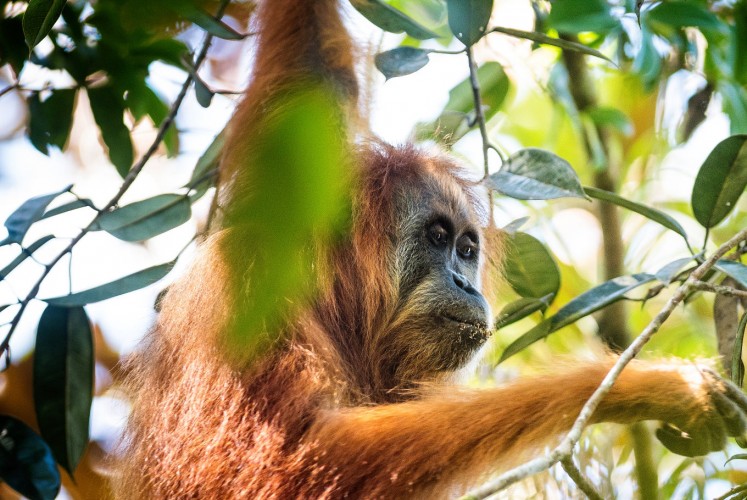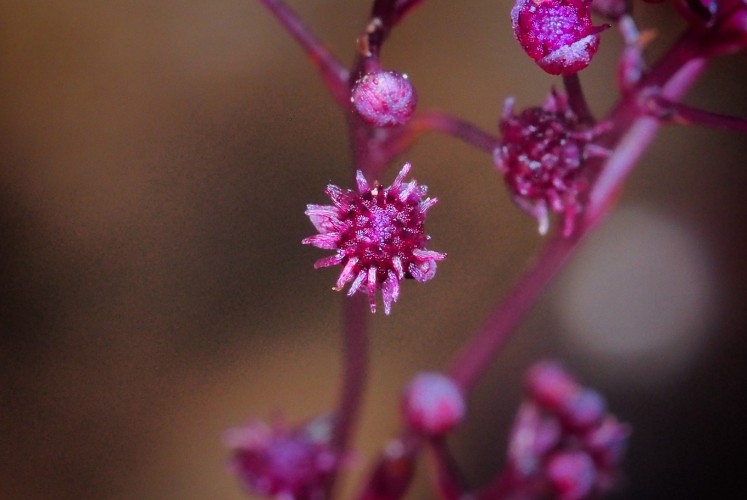Popular Reads
Top Results
Can't find what you're looking for?
View all search resultsPopular Reads
Top Results
Can't find what you're looking for?
View all search resultsTapanuli orangutan among 10 new species in 2018
New, endangered species of orangutan in North Sumatra listed among top 10.
Change text size
Gift Premium Articles
to Anyone
T
he Tapanuli orangutan has been included in the Top 10 New Species for 2018. The annual list is compiled by the International Institute for Species Exploration (IISE) under the SUNY College of Environmental Science and Forestry (ESF) in New York, the United States.
Back in 2001, orangutans in Sumatra and Borneo, Pongo abelii and Pongo pygmaeus, respectively, were identified as different species. Based on the study on “Morphometric, behavioral and gnomic evidence”, the great apes in Batang Toru in South Tapanuli district, North Sumatra, are considered different from those in Sumatra and Borneo.
An adult female Tapanuli orangutan named Beta. (SUNY College of Environmental Science and Forestry (ESF) /Andrew Walmsley )Furthermore, the gnomic evidence showed that while the Sumatran and Bornean orangutans had separated around 674,000 years ago, this new species had parted earlier, around 3.38 million years ago. It bears a resemblance to other orangutans in terms of size, with the height of the female ape below 1.21 meters and the male below 1.53 meters.
Despite the discovery, the Tapanuli orangutan is considered endangered as there are only about 800 apes left in their habitat.
Read also: Three tips for orangutan-watching
A female 'Sciaphila sugimotoi' flower. 'Sciaphila sugimotoi' is just under 10 cm in height, and only appears during short flowering times in September and October, producing small blossoms. (SUNY College of Environmental Science and Forestry (ESF) /Takaomi Sugimoto)Aside from the Tapanuli orangutan, the list also contains the Ancoracysta twista, a single-cell protist that was found in an aquarium in San Diego, US, the giant Atlantic forest tree, which weighs about 62 tons, the amphipod Epimeria Quasimodo, which is named after Victor Hugo’s character Quasimodo, the small Baffling Beetle, the Swire’s Snailfish that lives in the depths of the Marianas Trench in the western Pacific Ocean, Heterotrophic flower the Sciaphila sugimotoi, which was discovered in Japan, volcanic bacterium Thiolava veneris that may look like long, white hair at a glance, fossils of the Marsupial Lion that was believed to be an omnivore based on teeth examination and the cave beetle Xuedytes bellus from China.
Detail of 'Thiolava veneris' colonizing submarine volcanic rocks (SUNY College of Environmental Science and Forestry (ESF) /Miquel Canals)“I’m constantly amazed at how many new species show up and the range of things that are discovered,” said Quentin Wheeler, ESF President and founding director of the IISE, in a press release. “We name about 18,000 [species] per year but we think at least 20,000 [species] per year are going extinct. So many of these species – if we don’t find them, name them and describe them now – will be lost forever.” (wir/wng)














